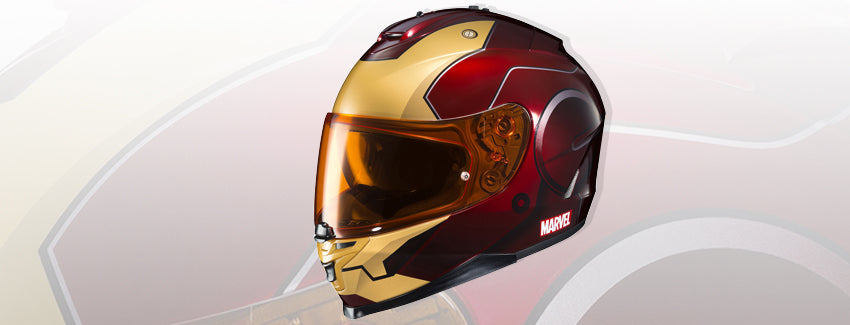| For about as long as brothers have been on two wheels, someone has been worried about their head. More specifically a way to protect the brain inside the skull. |
| The first was probably good enough to prevent a sunburn. Its ability to protect the head in the event of a crash, well, not so much. It could stop some cuts but would not do much to stop blunt force trauma like slamming your noggin into the pavement. Gottlieb Daimler, credited with being the first person to create a real motorcycle, also gets the nod for the first helmet. |
| It was a few more years before helmets got a boost in the protection level. In 1914, Dr. Eric Gardner, a British physician, came up with the idea of a shellacked canvas shell. It was not even a hard hat by today's standards of protection. That year, the Isle of Man TT agree the helmets were a good idea. All the racers were required to wear one. |
| Helmet use still did not catch on. |
| Lid use and the advent of helmet laws got a boost in a graphic and unfortunate way. |
| T.E. Lawrence is the man the world knows as Lawrence of Arabia. Some people probably know he met an untimely end in 1935 after a motorcycle crash. |
| What is far less well-known is that wreck stepped up efforts to create and encourage the use of motorcycle helmets. |
| "His neurosurgeon, Sir Hugh Cairns, was dismayed by the numerous deaths of motorcycle riders, particularly military messengers, and began studying a way to protect them from the kinds of head injuries that killed Lawrence. The result was the motorcycle helmet," says an article at All State Rider News. |
| Sir Cairns ran into resistance to the idea of bikers wearing helmets. Sound familiar? "Cairns faced a lot of obstacles in his research work, the biggest being that he could not find enough riders who would voluntarily wear the helmet to show that wearing helmets did make a significant difference. However, Cairns got his first victory, when in November 1941, the British Army, having lost two riders within a week in accidents, issued an order for all despatch riders to wear helmets with either a cork shelled or a rubber lid," says a timeline on the evolution of lids at Sutori. |
| Again, not a tremendous amount of protection, but certainly better than nothing. The cork lining could provide a bit of impact protection. |
| The next major change came in 1953. USC Professor C.F. "Red" Lombard applied for a patent for the first motorcycle helmet that had an "energy absorbing layer" integral to the lid. In other words, for the first time, someone had a helmet that cushioned impact and offered more than a slight protection to a skull. |
| In 1957 the Snell Memorial Foundation got started with the aim of making helmets safer. SMF is named for the late Pete "William" Snell. Snell continues to lead the world in helmet safety. |
| In the 60s, fiberglass shell helmets became widely available. Few had face shields. |
| Polycarbonate plastic, as cast form of heavy plastic, was next. |
| In the mid-70s, full face helmets got a boost from racers Kenny Roberts and Mario Andretti. With these two well-known and much-respected racers touting the safe of full-face helmets, more riders started wearing them. Stunt rider Evel Knievel wearing full-face helmets was another shot in the arm for this style. |
| The tech was still same as helmet makers tinkered with different shell formulas and padding ideas. |
| The next step up for the outer shell was carbon fiber. Tough, long-lasting and less weight than fiberglass or polycarbonate plastic, these helmets also command premium prices because of the carbon fiber tech. |
| Today's helmets are light years from the old padded leather. They are cooler and much tougher. |
The evolution of the motorcycle helmet

Tags: Everything else




